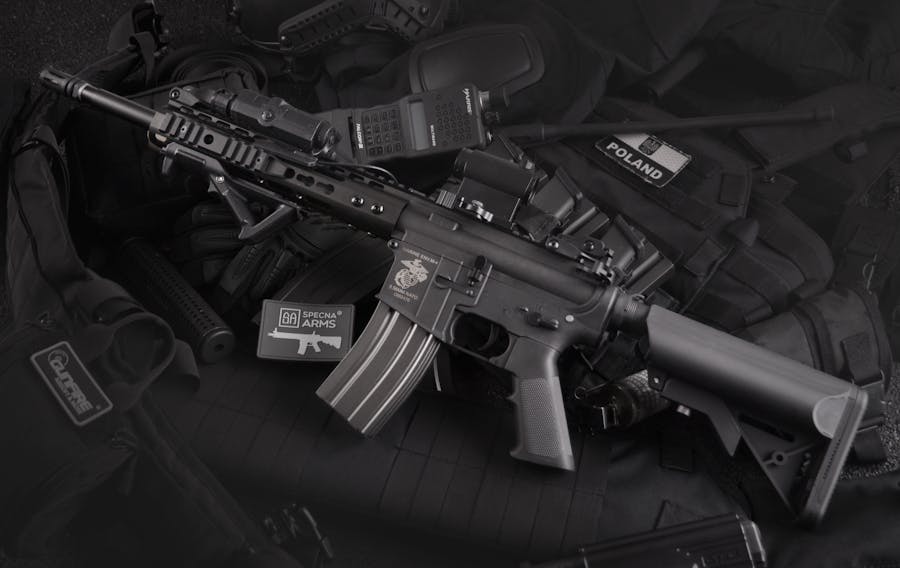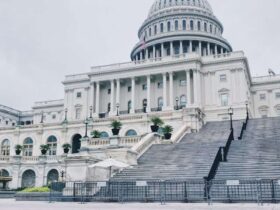Guns have long been a significant part of American culture, fueling discussions and debates across the country. The question of how many people own guns in America is more than just a statistic; it reflects the nation’s historical, cultural, and social dynamics. With various studies and surveys attempting to provide an accurate count, understanding the extent of gun ownership in the United States offers insights into public sentiment, safety concerns, and legislative actions. In this article, we delve into the latest statistics, trends, and factors influencing gun ownership, providing a comprehensive overview of this critical topic.
The Current State of Gun Ownership in America
Understanding how many people own guns in America requires a look at various surveys and research findings. According to recent data from Pew Research Center, approximately 30% of American adults report owning a gun. This figure, however, can vary due to factors like regional differences, urban versus rural settings, and demographic characteristics.
The General Social Survey (GSS) offers another perspective, indicating that around 32% of Americans own guns. While these numbers might seem straightforward, the reality is more complex. Factors such as unregistered firearms and individuals hesitant to disclose ownership contribute to the difficulty in obtaining precise figures.
Geographically, gun ownership is more prevalent in rural areas compared to urban centers. The South and Midwest regions of the U.S. report higher ownership rates than the Northeast and West. This geographical disparity highlights the cultural and historical factors that influence gun ownership trends.
Demographically, gun ownership is more common among men than women, with a significant portion of owners being white males. Age also plays a role, with older adults more likely to own guns than younger generations. These demographic trends reflect long-standing cultural norms and values associated with firearms in American society.
In summary, the current state of gun ownership in America is shaped by a myriad of factors. While surveys provide a snapshot, the true picture is influenced by cultural, regional, and demographic nuances that paint a complex and multifaceted portrait of gun ownership in the United States.
Factors Influencing Gun Ownership
Personal Protection: One of the primary reasons Americans own guns is for personal protection. Many individuals feel safer having a firearm at home or carrying one for self-defense. This sentiment is particularly strong in areas with higher crime rates, where residents perceive a greater need to protect themselves and their families.
Recreational Use: Recreational activities, such as hunting and shooting sports, also drive gun ownership. These activities are especially popular in rural areas and among communities where hunting is a traditional pastime. Firearms used for recreation often include rifles and shotguns, which are distinct from those purchased primarily for self-defense.
Constitutional Rights: The Second Amendment of the U.S. Constitution plays a crucial role in the gun ownership debate. Many Americans view gun ownership as a fundamental right and an essential part of their heritage. This perspective is often reinforced by advocacy groups and political organizations that emphasize the importance of protecting this constitutional right.
Political and Social Factors: Political affiliation and social attitudes significantly influence gun ownership. Generally, individuals with conservative or libertarian views are more likely to own guns and support gun rights. Conversely, those with more liberal perspectives may advocate for stricter gun control measures. These ideological divides contribute to the ongoing debate over gun legislation in the country.
Economic Considerations: Economic factors can also impact gun ownership rates. Firearms and ammunition can be expensive, and economic downturns may influence individuals’ ability to purchase or maintain their firearms. Additionally, economic insecurity might lead some individuals to buy guns for protection against potential threats.
The Role of Demographics in Gun Ownership
Demographic trends play a significant role in understanding how many people own guns in America. Here are some key points:
- Gender: Men are more likely to own guns than women, with approximately 40% of men and 22% of women reporting gun ownership.
- Age: Older adults tend to have higher gun ownership rates, with the highest prevalence among those aged 50 and above.
- Race and Ethnicity: White Americans are more likely to own guns compared to Black and Hispanic populations. Around 36% of white adults report owning a firearm, versus 24% of Black adults and 15% of Hispanic adults.
- Income Level: Higher income levels are associated with higher gun ownership rates. Households earning $90,000 or more annually are more likely to own firearms than those with lower incomes.
- Education: Gun ownership is also influenced by education levels, with individuals holding high school diplomas or some college education reporting higher ownership rates than those with bachelor’s degrees or higher.
These demographic factors provide valuable insights into the patterns of gun ownership across different segments of the American population.
Alternative Perspectives on Gun Ownership Statistics
While official surveys provide valuable data on gun ownership, alternative perspectives suggest that the actual numbers may be higher. Some researchers argue that underreporting and unregistered firearms contribute to a significant gap between reported and actual ownership figures. This underreporting can stem from a lack of trust in survey anonymity or fears of potential repercussions.
Additionally, cultural factors may influence the willingness of individuals to disclose gun ownership. In communities where firearms are integral to daily life, owning a gun might be seen as a given, leading to underreporting. Conversely, in areas with strict gun control laws or negative attitudes towards guns, individuals might be less likely to admit ownership.
These alternative perspectives highlight the complexity of accurately gauging gun ownership in America. They suggest that while surveys provide a useful baseline, the true extent of gun ownership might be higher than reported, influenced by a myriad of social, cultural, and personal factors.
Regional Differences in Gun Ownership
Urban vs. Rural:
Gun ownership varies significantly between urban and rural areas. Rural residents are more likely to own guns for hunting and protection, while urban dwellers might prioritize self-defense due to higher perceived crime rates.
Regional Variations:
The South and Midwest have higher gun ownership rates compared to the Northeast and West. This regional variation reflects historical, cultural, and legislative differences that influence gun ownership.
State Laws:
State-specific gun laws also impact ownership rates. States with lenient gun laws tend to have higher ownership rates, while those with stricter regulations see lower rates. This legal landscape shapes the ease with which residents can purchase and own firearms.
Cultural Influences:
Cultural attitudes towards guns vary by region, influencing ownership rates. In areas where guns are seen as part of everyday life and heritage, ownership rates are higher. Conversely, in regions with strong
Impact of Gun Ownership on Society
Personal Safety: Many Americans believe owning a gun enhances personal safety. While some studies suggest that gun ownership can deter crime, others indicate that having a gun at home increases the risk of accidental shootings and domestic violence incidents. Personal safety motivations are often heightened in areas with higher crime rates, leading to increased gun purchases for self-defense purposes.
Crime Rates: The relationship between gun ownership and crime rates is a subject of ongoing debate. Some argue that higher gun ownership deters crime by making it riskier for criminals, while others point to data showing that areas with higher gun ownership have higher rates of gun-related crimes. Research is mixed, with no definitive answer on whether more guns lead to more or less crime.
Public Health: Gun-related accidents, homicides, and suicides pose significant public health challenges. Studies show that the presence of a firearm in the home increases the risk of both fatal and non-fatal injuries. Public health campaigns often focus on safe storage practices and awareness to reduce accidental shootings and unauthorized access to firearms.
Economic Impact: The firearm industry is a substantial economic contributor, providing jobs and generating revenue through the sale of guns, ammunition, and accessories. Conversely, the economic costs of gun violence are considerable, including medical expenses, law enforcement resources, and loss of productivity. Balancing the economic benefits of the gun industry with the costs associated with gun violence is a complex issue for policymakers.
Legislative Debates: Gun ownership statistics are central to legislative debates over gun control measures. Proponents of stricter gun laws argue that higher ownership rates necessitate tighter regulations to ensure public safety. Opponents contend that responsible gun ownership should not be penalized and emphasize the importance of constitutional rights.
Social Implications: Gun ownership influences social dynamics and community relationships. In some communities, owning a gun is a symbol of independence and self-reliance, while in others, it may be viewed with suspicion or concern. Social attitudes toward guns can shape local norms and impact the overall culture around firearms.
Cultural Values: Gun ownership is deeply embedded in American culture, reflecting values of freedom, self-defense, and individual rights. Cultural values often dictate attitudes toward gun ownership, with regions having long-standing traditions of hunting and firearms seeing higher rates of ownership. These cultural perspectives play a significant role in the national conversation about guns, influencing everything from media portrayals to political platforms.
Why Do Americans Own Guns?
Understanding why Americans own guns involves exploring various motivations:
- Personal Protection: Many Americans cite self-defense as a primary reason.
- Hunting and Sports: Recreational activities like hunting and shooting sports drive ownership.
- Constitutional Rights: The Second Amendment plays a critical role.
- Cultural Heritage: In some regions, gun ownership is a deeply ingrained tradition.
- Political Beliefs: Political affiliations and ideologies impact views on gun ownership.
- Economic Factors: Economic status can influence the ability to purchase and maintain firearms.
Conclusion:
Understanding how many people own guns in America provides insights into broader societal trends and issues. With around 30-40% of households owning firearms, this aspect of American life remains deeply entrenched. The future of gun ownership will likely continue to evolve with changing demographics, cultural attitudes, and legislative actions. As debates over gun control and rights persist, staying informed about ownership trends is crucial for fostering informed discussions and policies.
FAQs
How accurate are gun ownership statistics?
Gun ownership statistics are estimates, often influenced by factors like underreporting and unregistered firearms, making precise figures challenging to determine.
Why do Americans own so many guns?
Americans own guns for various reasons, including personal protection, recreational activities, and exercising their constitutional rights.
Which states have the highest gun ownership rates?
States in the South and Midwest generally have the highest gun ownership rates, influenced by cultural, historical, and legislative factors.
How does gun ownership impact public safety?
The impact of gun ownership on public safety is complex, with debates over whether it increases personal safety or contributes to higher risks of gun-related incidents.











Leave a Reply